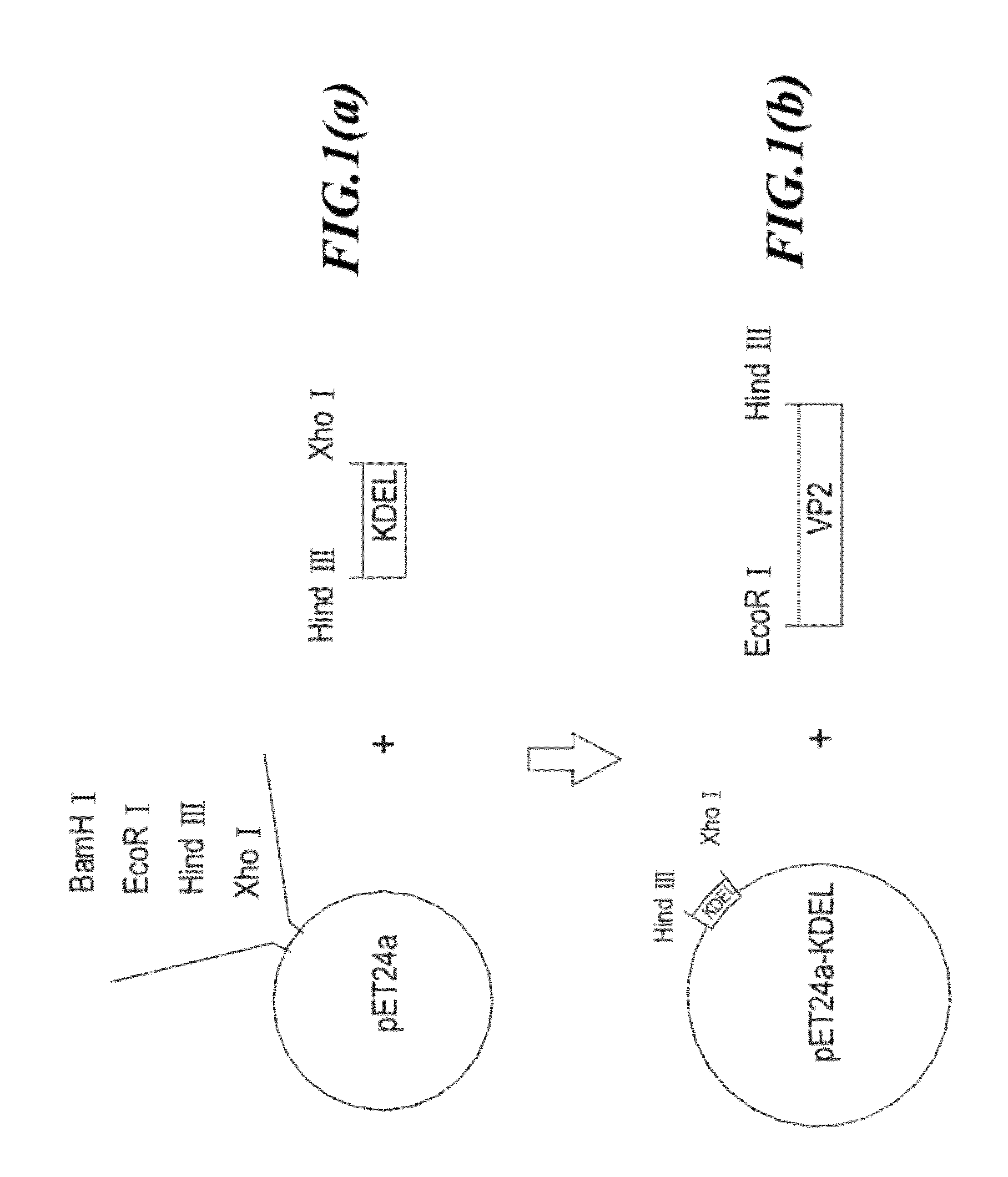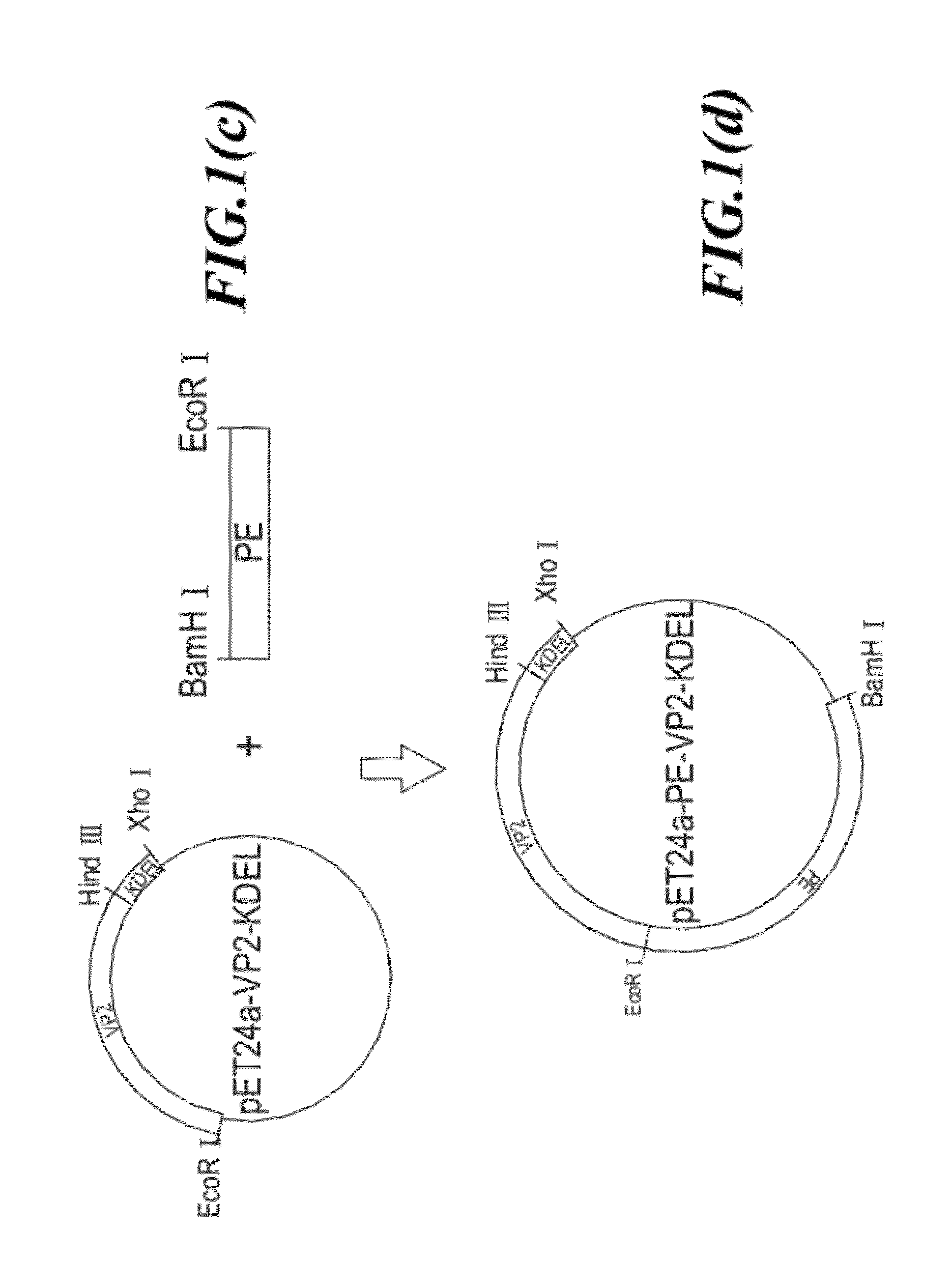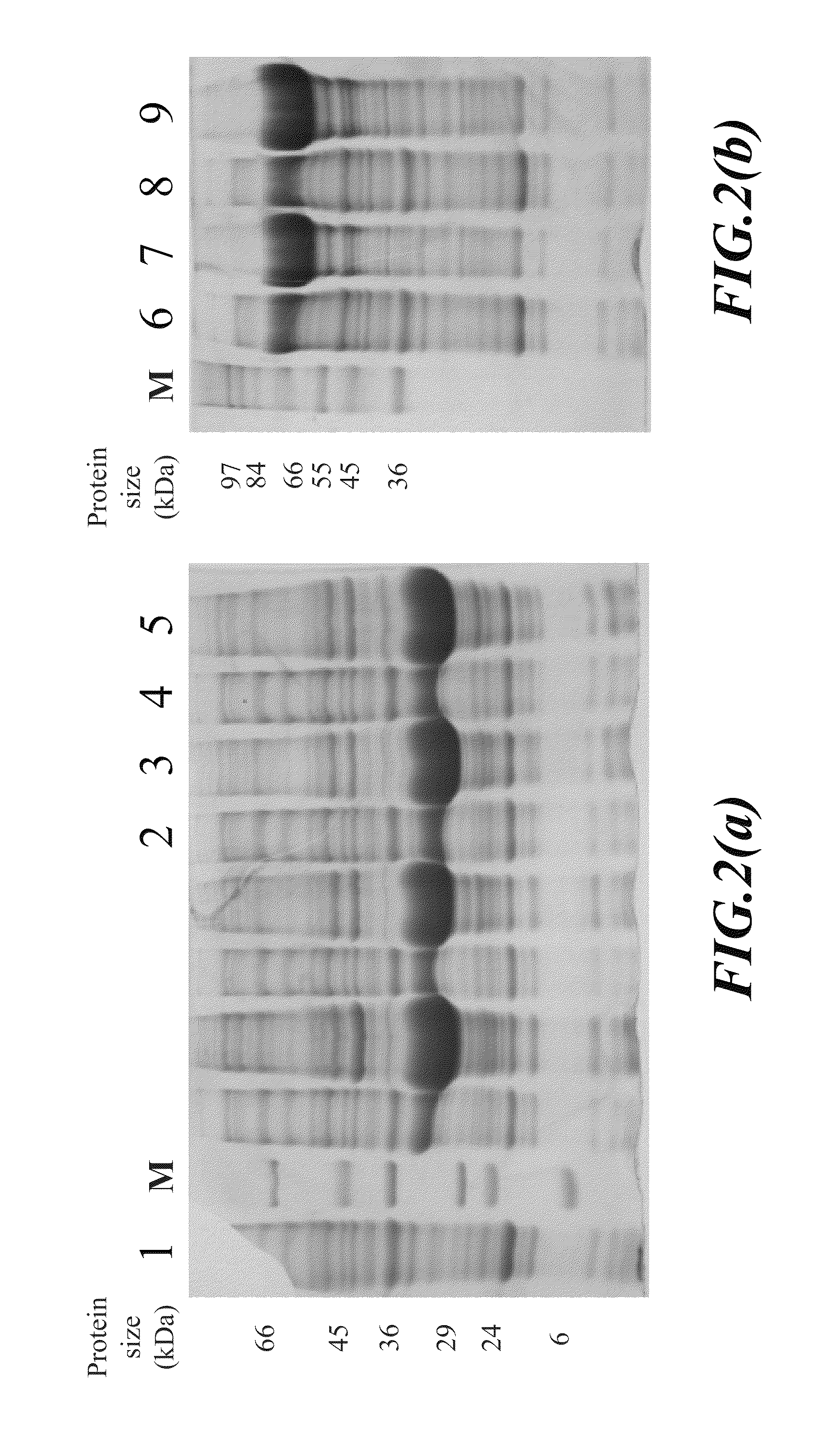Subunit vaccine for aquaculture
a subunit vaccine and aquaculture technology, applied in the field of aquatic subunit vaccines, can solve the problems of rare fish cell lines, severe threat of ipnv, environmental protection, etc., and achieve the effects of reducing manufacturing costs, improving vaccine purity, and simplifying the mass production process
- Summary
- Abstract
- Description
- Claims
- Application Information
AI Technical Summary
Benefits of technology
Problems solved by technology
Method used
Image
Examples
example 1
The Construction of pET24-PE-VP2-KDEL Expression Vector for Antigenic Fusion Protein
[0033]In this example, a fragment of IPNV VP2 was used as the antigen of the aquatic subunit vaccine. A receptor binding motif and the a translocation protein (PE protein) of exotoxin A were conjugated to the N terminus of VP2, as well as a KDEL signal peptide was conjugated to its C terminus, thereby formed the antigenic fusion protein (PE-VP2-KDEL).
[0034]The antigenic fusion protein (PE-VP2-KDEL) was created by a gene cloning technology comprising cloning DNA sequences encoding respective proteins into an expression vector to form an expression vector pET24a-PE-VP2-KDEL, and then inducing protein expression.
[0035]The strategy for constructing the antigenic fusion protein expression vector (24a-PE-VP2-KDEL) is shown in FIG. 1. First, the DNA sequence encoding KDEL signal peptide is cloned into a plasmid pET24a to form plasmid pET24a-KDEL (as shown in FIGS. 1a and 1b). Next, the DNA sequence encoding...
example 2
Vaccine Preparation
1. The Expression of Antigenic Fusion Protein
[0053]E. coli BL21 cells transformed as described above with plasmid pET24a-PE-VP2-015-KEDL or plasmid pET24a-PE-VP2-016-KEDL, or E. coli BL21 cells containing plasmid pET24a-PE-VP2-016 or plasmid pET24a-PE-VP2-016 were cultured, respectively, at 37° C. in LB broth containing 50 μg / ml kanamycin overnight. Then, 10 ml of the culture was added into 990 ml fresh LB broth containing 50 μg / ml kanamycin. The diluted cell culture was incubated further at 37° C. by shaking at 250 rpm for 3 hours. Then, 1 ml 1M IPTG (final concentration 1 mM) as an inducer, was added to the culture to induce the expression of the antigenic fusion protein (PE-VP2-015-KEDL whose amino acid sequence was shown as SEQ ID No: 12; or PE-VP2-016-KEDL whose amino acid sequence was shown as SEQ ID No: 14). After IPTG induction, cells were cultured for another three hours and then, harvested by centrifugation at 6,5000×g at 4° C. for 30 minutes. The supern...
example 3
Anti-Viral Test in Salmons
[0057]The basic information about salmons tested was as followed:
[0058]
SpeciesAtlantic salmon (Salmo salar L.)StrainAquagen AS, LR (Low resistance) 06AGHe01SizeAverage 60-90 gVaccination historyNot previously vaccinatedDiseases historyNone
[0059]Culture conditions of salmons in the stage of smoltification:
[0060]
WaterSalinityTemp.QualityTimePhotoperiodFlowDensity0‰8-12° C.Fresh5 weeks12 hours daylight0.8 l / kg fishMax. 40water12 hours darknesspr. min.kg / m30‰8-12° C.FreshFrom week 524 hour daylight0.8 l / kg fishMax. 40waterand onwardspr. min.kg / m3
[0061]There were four groups plus one control group of salmons used in virus resistant test. Each group had thirty salmons. The prepared vaccines were administrated by intraperitoneal injection (i.p.) into the fishes. The dose of the vaccine was 0.1 ml per fish, which corresponded to 0.1 μg of antigenic fusion protein or VP2 viral protein per fish. The virus resistant test was designed as described below:[0062]Group 1: ...
PUM
| Property | Measurement | Unit |
|---|---|---|
| pH | aaaaa | aaaaa |
| pH | aaaaa | aaaaa |
| molecular weights | aaaaa | aaaaa |
Abstract
Description
Claims
Application Information
 Login to View More
Login to View More - R&D
- Intellectual Property
- Life Sciences
- Materials
- Tech Scout
- Unparalleled Data Quality
- Higher Quality Content
- 60% Fewer Hallucinations
Browse by: Latest US Patents, China's latest patents, Technical Efficacy Thesaurus, Application Domain, Technology Topic, Popular Technical Reports.
© 2025 PatSnap. All rights reserved.Legal|Privacy policy|Modern Slavery Act Transparency Statement|Sitemap|About US| Contact US: help@patsnap.com



